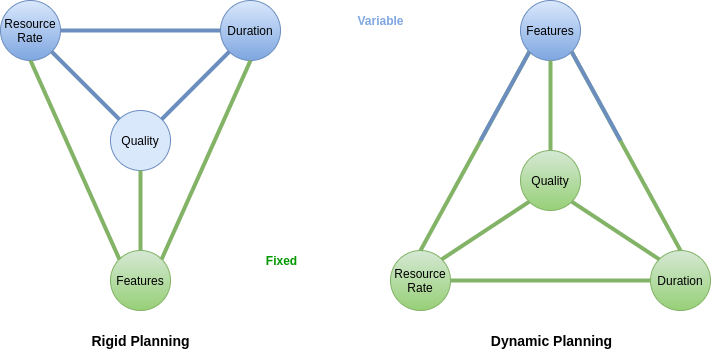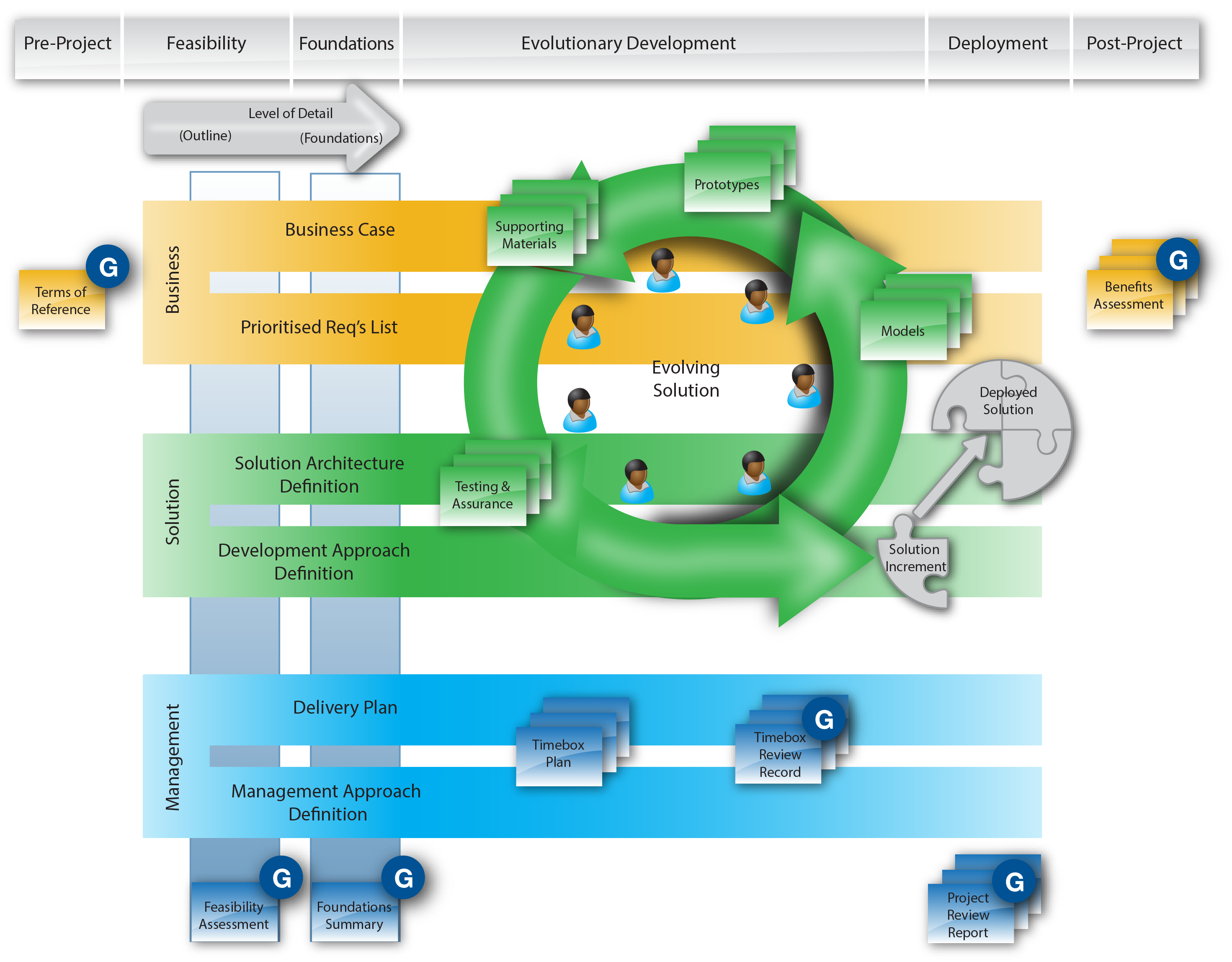Just enough design
This post was originally written while I was at LShift / Oliver Wyman
On the one hand it’s become a bit of a cliché to say that Waterfall doesn’t work (in fact ‘waterfall’ may never have existed), but we know that rigid projects don’t deliver—when the level of resources is the only contingency in a project then budget overrun and missed deadlines (or lowered quality) become almost inevitable.
On the other hand, the original “Agile Manifesto” is now more than 15 years old and is starting to seem like it’s missing a few things. Certainly some of the processes inspired by the manifesto seem to be of a benefit, for example: the frequent touch points of the daily stand-up, regular retrospectives (as long as there’s the organisational will to implement the recommendations), personal and regular communication, and so on. But there are occasionally huge drawbacks—how many times have developers heard things like:
- “You’re doing sprints now so you can deliver in less time yes?”
- “Yes I know I’ve changed my mind 4 times but you’re Agile so you can cope right?”
Also ‘Agile’ seems to encourage projects where the deadline and budget have been set but only against the vaguest notion of a requirements list; the development team is gathered together and the first question is “what is it we’re doing exactly?”.
At the other extreme, I have seen projects that languish with the Enterprise Architecture team for years while the Transformation Maps are drawn to full impact scope along with software designs, object integration designs, data schema, and vendor evaluation, etc., in the finest detail so “the programmers can just get it done (and properly this time)" – and perhaps never even really starting.
But some projects just have a nature that isn’t amenable to fast-spinning agile.
“This style of short-term planning, direct customer contact, and continuous iteration is well suited to software with a simple core and lots of customer visible features that are incrementally useful. It is not so well suited to software which has a very simple interface and tons of hidden internal complexity, software which isn’t useful until it’s fairly complete” – David Jeske
“A designer cannot claim to have truly designed something until they also know how that thing will be made” – Terence Conran, designer, and founder of the London Design Museum.
So what can we do? I’m certainly not claiming that design and architecture are bad things – commercial software projects shouldn’t start unless there’s confidence of delivery – but there needs to be a balance between rushing in blind and agonising over the unknown (and my contention is that his balance should be found before the main budgets and timelines are set).
Well, AgilePM (formerly DSDM) introduces a notion of governance to an Agile project:
The circle in the middle represents the ‘traditional’ sprints (a manifesto that’s 15 years old can be referred to as ‘traditional’ by now I think…) but supported by a well-reasoned set of gateways and light-touch documentation. With regards to Enterprise Architecture, the important columns in the diagram are the two near the left marked Feasibility and Foundations: they represent the notion of ‘lJust Enough Design’.
LShift (acquired by Oliver Wyman in December 2016) has a 17 year history of successful major software product delivery using agile methods including DSDM/AgilePM. The technical Feasibility and Foundations phases are what might be termed Architecture and Design (Enterprise or otherwise) under other formalisms but there are important differences:
- It needs to be Just Enough and no more. Just enough to clearly communicate the vision and scale of the project and bring confidence of delivery but without so many trees that the wood becomes obscured.
- It must closely involve at least some members of the team who are likely to produce it. Any Enterprise Architecture team completely separated from implementation inevitably loses touch with the reality of delivery.
Just Enough design – the technical Feasibility and Foundations – is essential, but once it’s been done the process of delivery should be handed over to the engineers. I’ve been on both sides and it’s clear to me when, in an Architect role, I should get out of the way. With apologies for taking an example from the military, “Intent and Initiative” is becoming seen as clearly more effective than “Command and Control”.
Like the three bears, Big Design Up Front is too much, and a ‘headless chicken’ Agile Manifesto is not enough – but maybe the processes of AgilePM can be Just Enough governance. Certainly software projects need design to be successful – not too much or too little, Just Enough.

